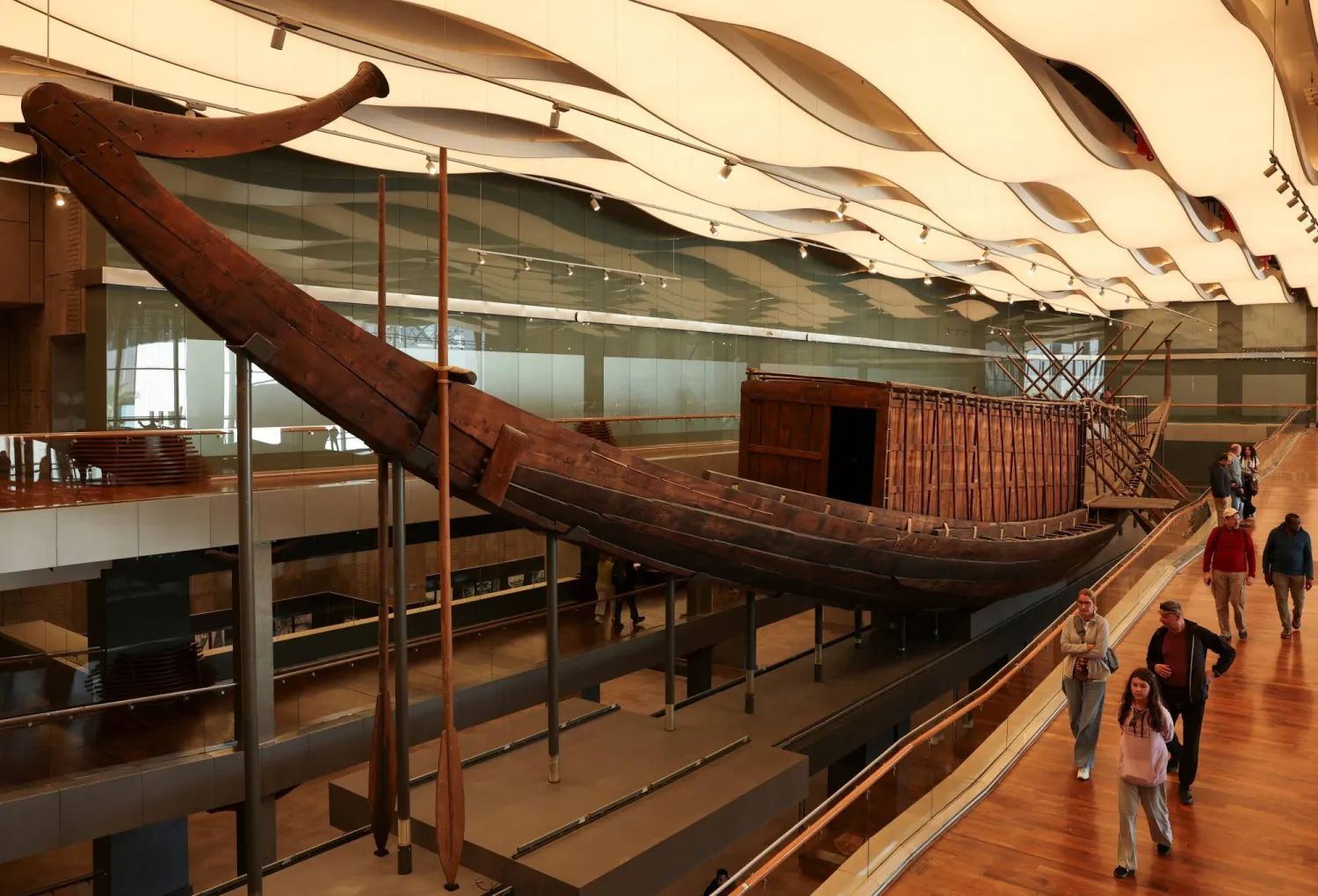The Louvre, the world’s most-visited museum and a global symbol of art, beauty and endurance, remained shuttered most of Monday when staff went on strike in frustration over what they called unmanageable crowds at an institution crumbling from within.
It was an almost unthinkable sight: the home to works by Leonardo da Vinci and millennia of civilization’s greatest treasures, paralyzed by the very people tasked with welcoming the world to its galleries.
Thousands of stranded and confused visitors, tickets in hand, were corralled into unmoving lines beneath I.M. Pei's glass pyramid.
"It’s the Mona Lisa moan out here," said Kevin Ward, 62, from Milwaukee. "Thousands of people waiting, no communication, no explanation. I guess even she needs a day off."
The Louvre has become a bellwether of global overtourism, overwhelmed by its own popularity. As tourism magnets from Venice to the Acropolis scramble to cap crowds, the world’s most iconic museum is reaching a reckoning of its own.
The spontaneous strike erupted during a routine internal meeting, as gallery attendants, ticket agents and security personnel refused to take up their posts in protest over unmanageable crowds, chronic understaffing and what one union called "untenable" working conditions.
It’s rare for the Louvre to close its doors. It has happened during war, during the pandemic, and in a handful of strikes, including spontaneous walkouts over overcrowding in 2019 and safety fears in 2013. But seldom has it happened so suddenly, without warning, and in full view of the crowds.
What's more, the disruption comes just months after President Emmanuel Macron unveiled a sweeping decade-long plan to rescue the Louvre from precisely the problems now boiling over - water leaks, dangerous temperature swings, outdated infrastructure, and foot traffic far beyond what the museum can handle.
But for workers on the ground, that promised future feels distant.
"We can’t wait six years for help," said Sarah Sefian of the CGT-Culture union. "Our teams are under pressure now. It’s not just about the art; it’s about the people protecting it."
The Mona Lisa’s daily mob
At the center of it all is the Mona Lisa, a 16th-century portrait that draws modern-day crowds more akin to a celebrity meet-and-greet than an art experience.
Roughly 20,000 people a day squeeze into the Salle des États, the museum’s largest room, just to snap a selfie with Leonardo da Vinci’s enigmatic woman behind protective glass. The scene is often noisy, jostling, and so dense that many barely glance at the masterpieces flanking her. Works by Titian and Veronese that go largely ignored.
"You don’t see a painting," said Ji-Hyun Park, 28, who flew from Seoul to Paris. "You see phones. You see elbows. You feel heat. And then, you’re pushed out."
Macron’s renovation blueprint, dubbed the "Louvre New Renaissance," promises a remedy. The Mona Lisa will finally get her own dedicated room, accessible through a timed-entry ticket. A new entrance near the Seine River is also planned by 2031 to relieve pressure from the overwhelmed pyramid hub.
"Conditions of display, explanation and presentation will be up to what the Mona Lisa deserves," Macron said in January.
But Louvre workers call Macron hypocritical and say the €700–800 million renovation plan masks a deeper crisis. While Macron is investing in new entrances and exhibition space, the Louvre’s annual operating subsidies from the French state have shrunk by more than 20% over the past decade, even as visitor numbers soared.
"We take it very badly that Monsieur Le President makes his speeches here in our museum," Sefian said, "but when you scratch the surface, the financial investment of the state is getting worse with each passing year."
While many striking staff plan to remain off duty all day, Sefian said some workers may return temporarily to open a limited "masterpiece route" for a couple of hours, allowing access to select highlights including the Mona Lisa and the Venus de Milo. The full museum might reopen as normal on Wednesday, and some tourists with time-sensitive tickets for Monday may be allowed to reuse them then. On Tuesday the Louvre is closed.
A museum in limbo
The Louvre welcomed 8.7 million visitors last year, more than double what its infrastructure was designed to accommodate. Even with a daily cap of 30,000, staff say the experience has become a daily test of endurance, with too few rest areas, limited bathrooms, and summer heat magnified by the pyramid’s greenhouse effect.
In a leaked memo, Louvre President Laurence des Cars warned that parts of the building are "no longer watertight," that temperature fluctuations endanger priceless art, and that even basic visitor needs, such as food, restrooms, signage, fall far below international standards. She described the experience simply as "a physical ordeal."
"What began as a scheduled monthly information session turned into a mass expression of exasperation," Sefian said. Talks between workers and management began at 10:30 a.m. and continued into the afternoon.
The full renovation plan is expected to be financed through ticket revenue, private donations, state funds, and licensing fees from the Louvre’s Abu Dhabi branch. Ticket prices for non-EU tourists are expected to rise later this year.
But workers say their needs are more urgent than any 10-year plan.
Unlike other major sites in Paris, such as Notre Dame cathedral or the Centre Pompidou museum, both of which are undergoing government-backed restorations, the Louvre remains stuck in limbo — neither fully funded nor fully functional.
President Macron, who delivered his 2017 election victory speech at the Louvre and showcased it during the 2024 Paris Olympics, has promised a safer, more modern museum by the end of the decade.
Until then, France’s greatest cultural treasure and the millions who flock to see it remain caught between the cracks.









